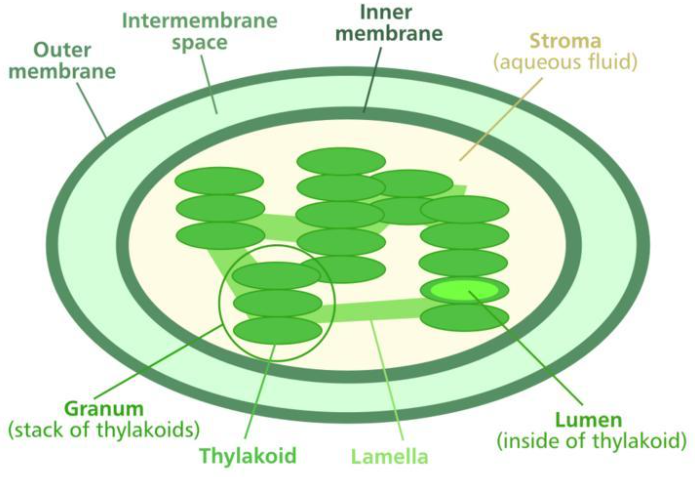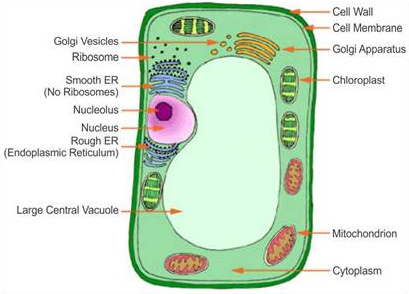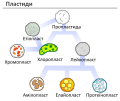40 plastids diagram with labels
Stanford University UNK the , . of and in " a to was is ) ( for as on by he with 's that at from his it an were are which this also be has or : had first one their its new after but who not they have History of botany - Wikipedia Botany (Greek Βοτάνη - grass, fodder; Medieval Latin botanicus – herb, plant) and zoology are, historically, the core disciplines of biology whose history is closely associated with the natural sciences chemistry, physics and geology.A distinction can be made between botanical science in a pure sense, as the study of plants themselves, and botany as applied science, which studies …
Plastids - Different types of Plastids and their functions in ... - BYJUS There are different types of plastids with their specialized functions. Among them, a few are mainly classified based on the presence or absence of the Biological pigments and their stages of development. Chloroplasts Chromoplasts Gerontoplasts Leucoplasts Chloroplasts
Plastids diagram with labels
Study Notes on Genetics of Plastids (With Diagram) - Biology Discussion The below mentioned article provides a study note on Genetics of Plastids. In the cytoplasm of the plant cells are found many small cytoplasmic bodies, called plastids. These plastids are of several types, such as, chloroplast, leucoplast, chromoplast and so on. Plastids arise from smaller particles, the proplastids, found in the egg cytoplasm. Animal Cells Label The Organelles In The Diagram Below : Plant and ... They include the cell wall, large central vacuole, and plastids 19. As observed in the labeled animal cell diagram, the cell membrane forms the confining factor of the cell, that is it envelopes the cell ribosomes are small, spherical organelles comprising 65% ribosomal rna and 35% ribosomal proteins. Organelles in an animal cell. Animal Cell Diagram with Label and Explanation: Cell ... - Collegedunia Diagram of Animal Cell Below is the diagram of the animal cell which shows the organelles present in it. The cell is covered with cytoplasm which consists of cell organelles in it. The nucleus is covered with a rough Endoplasmic Reticulum and other organelles each designed for a specific purpose.
Plastids diagram with labels. Draw And Label Diagram Of Animal Cell - Adolfo Bridgman Check this diagram and learn m. The first is a colored and labeled cell diagram. There are six animal cell diagrams to choose from. Animal cell electron micrograph labelling. 2.3.1 draw and label a diagram of the ultrastructure of a liver cell as an example of an animal cell. The working together of all cells gives an animal its ability. Plastids - Types and Structure - VEDANTU Plastids - Types, Structure and Functions of Plastids The plastid is a membrane-bound organelle found in the cells of plants, algae, and various other eukaryotic organisms. Plastids were discovered and named by E. Haeckel, but A. F. W. Schimper was the first to deliver a clear definition. Use of corpora in translation studies 1137 Projects 1137 incoming 1137 knowledgeable 1137 meanings 1137 σ 1136 demonstrations 1136 escaped 1136 notification 1136 FAIR 1136 Hmm 1136 CrossRef 1135 arrange 1135 LP 1135 forty 1135 suburban 1135 GW 1135 herein 1135 intriguing 1134 Move 1134 Reynolds 1134 positioned 1134 didnt 1134 int 1133 Chamber 1133 termination 1133 overlapping 1132 newborn … Plastids: Types, Structure and Function (With Diagram) Plastids may be coloured or colourless and are of three types. The leucoplasts are the colourless plastids principally serving the purpose of storage. On the basis of nature of storage compound, leucoplastids are amyloplasts (starch), elaioplasts (oil) or aleuroplasts (protein). The green plastids or chloroplastids are needed for photosynthesis.
Plant Cell: Diagram, Types and Functions - Embibe Exams Plastids in Plant Cell. They are membrane-bound organelles that have their own DNA. They are necessary to store starch, to carry out the process of photosynthesis. It is also used in the synthesis of many molecules, which form the building blocks of the cell. Based on the type of pigment, they are of Plastids are of three types: a. Plastids: Everything You Need to Know and More Plastids are a diverse group of double-membrane bound organelles found in most plants and algae. They may also be found in ferns, moss, parasitic worms and marine mollusks. Apart from photosynthesis, these organelles also assist in food storage and synthesis of compounds such as lipids, amino acids and carbohydrates. Plant Cell Diagram Labeled Quizlet : Animal Cell Diagram Labelling ... Select one cell structure labeled in the diagram and write its number in the space below. Jul 27, 2021 · cell organelles definition. In your answer, be sure to: 5) cellulose / plant 6) collagen / animal (a primary distinction between plant cells and animal cells is the fact that plant cells are surrounded by cell walls. Chloroplast Structure and Function in detail with Labelled Diagram The chloroplasts are the cell organelles which consist of these pigments. The 3 types of pigments present in plants are chlorophyll, carotenoids, and anthocyanins. Chlorophyll imparts the green color to plants. Plastids are membrane-bound cytoplasmic organelles that can be found in the cells of plants and algae.
Plastid - Wikipedia There is an illustration of stages depicted by the diagram mentioned above in which it is shown inter-conversion of Plastids In 1977 J.M Whatley proposed a plastid development cycle which said that plastid development is not always unidirectional but is a cyclic process several times. Plastids - Leucoplasts, Chromoplasts and Chloroplasts. - Biology Exams 4 U These are colourless plastids found in the storage organs. They are found large numbers in the cells of fruits, seeds, tubers etc. They are variously shaped, viz., oval, rod like, or filamentous. They lack grana and photosynthetic pigments. They are of three types: Amyloplasts, Aleuronoplast (Proteinoplast) and Elaioplast or oleosomes. Chloroplast- Diagram, Structure and Function Of Chloroplast - BYJUS The chloroplast diagram below represents the chloroplast structure mentioning the different parts of the chloroplast. The parts of a chloroplast such as the inner membrane, outer membrane, intermembrane space, thylakoid membrane, stroma and lamella can be clearly marked out. Chloroplast Diagram representing Chloroplast Structure Animal Cell Labeled Dna : animal cell - labeled Classical Conversations ... Labeled diagram of plant cell, created with biorender.com. Source: pixfeeds.com The typical characteristics that define the plant cell include cellulose, hemicellulose and pectin, plastids which play a major role in photosynthesis and storage of starch, large vacuoles responsible for regulating the cell turgor pressure.
How Many Of These Structures Are Visible On The Plant Cell Diagram Functions : Functions and Diagram
Labeled Plant Cell With Diagrams | Science Trends The parts of a plant cell include the cell wall, the cell membrane, the cytoskeleton or cytoplasm, the nucleus, the Golgi body, the mitochondria, the peroxisome's, the vacuoles, ribosomes, and the endoplasmic reticulum. Parts Of A Plant Cell The Cell Wall Let's start from the outside and work our way inwards.
Plastids: Definition, Diagram, Types, and Plastid Function - Embibe Types of Plastids and Functions of Plastids Plastids are further divided into 3 types that have different functions and some have biological pigments as well. 1. Leucoplasts 2. Chromoplasts 3. Chloroplasts Leucoplasts These colourless Plastids possess internal lamellae and do not contain photosynthetic and grana pigments.
Answered: a) What is a mutation in molecular… | bartleby 17/08/2022 · the DNA is translated into a peptide. Be sure to discuss all steps. In other words, use a diagram and give me sequences, transcription and translation steps. ... What evidence supports the hypothesis that mitochondria preceded plastids in the ... Add labels to the strands above to show the 3’ and 5’ ends. arrow_forward. Using the following ...
Plant Cell Diagram Pdf - A Labeled Diagram of the Plant Cell and ... Labeled diagram of plant cell, created with biorender.com. In a plant cell, chloroplasts are the most prominent forms of plastids that contain chlorophyll, the green pigment. Identify the cell structures that the red arrow is pointing to in the images of a plant cell diagram. Cell parts blank diagram wiring services today printable plant.
Plant Cell-Definition, Structure, Parts, Functions, Labeled Diagram Figure: Labeled diagram of a plant cell, created with biorender.com The plant cell is comprised of cellulose, hemicellulose, and pectin, as well as plastids, which are essential for photosynthesis and starch storage, and enormous vacuoles that control cell turgor pressure.
Plant Cell Diagram Labeled | EdrawMax Template The following labeled diagram illustrates important components of plant cells: cell wall, cell membrane, nucleus, cell organelles (Mitochondria, Ribosomes membrane, Golgi apparatus, Lysosomes, Vacuole, and Plastids). As per the plant cell labeled diagram, the plant cell is rectangular, with a large vacuole occupying 30 percent of the cell volume.
Typical Animal Cell Drawing / Draw A Diagram Of Typical Cell And Label ... Labelled diagrams of typical animal and plant cells with editable image information: Except the protozoan euglena no animal cell possesses plastids. A typical animal cell comprises the following cell organelles. Plant cell and animal cell venn diagram. Animal cells are generally small in size and cell wall is absent. Structure of a typical cell.
The Stanford Natural Language Processing Group ' '' ''' - -- --- ---- ----- ----- ----- ----- ----- ----- ----- ----- ----- ----- ----- ----- ----- ----- ----- ----- ----- ----- ----- ----- ----- ----- ----- ----- ----- ----- ----- ----- ----- ----- ----- ----- ----- ----- ----- ----- ----- ----- ----- ----- ----- ----- ----- ----- ----- ----- ----- ----- ----- ----- ----- ----- ----- ----- ----- ----- -----
Plant Cell Diagram With Labels - Image of a plant cell ... - Blogger Labeled plant cell diagram labeled plant cell diagram. In this post, you are going to learn about the human body cell step by step with a labeled cell diagram. A plant cell differs from an animal cell in on the contrary, plant cells lack centrioles and intermediate filaments, which are present in animal cells. Source: ecdn.teacherspayteachers.com
Plant Cells: Labelled Diagram, Definitions, and Structure - Research Tweet The cell wall is made of cellulose and lignin, which are strong and tough compounds. Plant Cells Labelled Plastids and Chloroplasts Plants make their own food through photosynthesis. Plant cells have plastids, which animal cells don't. Plastids are organelles used to make and store needed compounds. Chloroplasts are the most important of plastids.
Cell Organelles- Definition, Structure, Functions, Diagram Plastids Ribosomes Storage granules Vacuole Vesicles Cell membrane (Plasma membrane/ Plasmalemma) A plasma membrane is composed of lipids and proteins where the composition might fluctuate based on fluidity, external environment, and the different stages of development of the cell. Structure of Cell Membrane
Plant Cell: Definition, Structure, Function, Diagram & Types Plant cell is a basic unit of a plant which consists of various cell organelles. Plant cells are eukaryotic cells that have a true nucleus with specialized structures, known as organelles, which carry out distinct functions. The main difference between a plant cell and an animal cell is the presence of a cell wall, cell membrane and chloroplast.
Animal Cells: Labelled Diagram, Definitions, and Structure - Research Tweet Animal Cells Organelles and Functions. A double layer that supports and protects the cell. Allows materials in and out. The control center of the cell. Nucleus contains majority of cell's the DNA. Popularly known as the "Powerhouse". Breaks down food to produce energy in the form of ATP.
Plant Cell Structure and Parts Explained With a Labeled Diagram Plant cells like animal cells are eukaryotic, i.e. they contain membrane bound nuclei and cell organelles. A plant cell differs from an animal cell in having certain distinctive structures - cell wall, vacuoles, plasmodesmata and plastids. On the contrary, plant cells lack centrioles and intermediate filaments, which are present in animal cells.
Plastids- Definition, Structure, Types, Functions and Diagram Plastid is a double membrane-bound organelle involved in the synthesis and storage of food, commonly found within the cells of photosynthetic plants. Plastids were discovered and named by Ernst Haeckel, but A. F. W. Schimper was the first to provide a clear definition.
Animal Cell Diagram with Label and Explanation: Cell ... - Collegedunia Diagram of Animal Cell Below is the diagram of the animal cell which shows the organelles present in it. The cell is covered with cytoplasm which consists of cell organelles in it. The nucleus is covered with a rough Endoplasmic Reticulum and other organelles each designed for a specific purpose.
Animal Cells Label The Organelles In The Diagram Below : Plant and ... They include the cell wall, large central vacuole, and plastids 19. As observed in the labeled animal cell diagram, the cell membrane forms the confining factor of the cell, that is it envelopes the cell ribosomes are small, spherical organelles comprising 65% ribosomal rna and 35% ribosomal proteins. Organelles in an animal cell.












Post a Comment for "40 plastids diagram with labels"